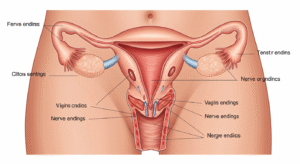Sexuality is an essential aspect of human life, and women and sex drive have long been subjects of intrigue, research, and misconceptions. While male sexuality has been widely discussed, the complexities of women and sex drive often remain misunderstood. Women’s sexual responses are influenced by biological, psychological, social, and emotional factors, making their experiences unique and dynamic.
Understanding Sex Drive in Women
Sex drive, also known as libido, refers to an individual’s desire for sexual activity. The sex drive in women is not as linear or constant as in men; rather, it fluctuates due to various influences such as hormonal changes, emotional well-being, and external stressors. While some women may experience a consistently high sex drive, others may go through phases of low or fluctuating sexual desire.
Unlike men, whose libido is often linked to testosterone levels, women’s sex drive is regulated by a combination of estrogen, progesterone, and androgens. Additionally, neurotransmitters like dopamine and serotonin play a crucial role in determining sexual desire and arousal levels.
Factors Affecting Women’s Sex Drive
Hormonal Changes
Hormones significantly impact women and sex drive, especially during menstruation, pregnancy, postpartum, and menopause. Estrogen and progesterone levels fluctuate throughout a woman’s life, influencing sexual arousal and desire.
- Menstrual Cycle: Many women report an increase in sexual arousal around ovulation due to a surge in estrogen levels.
- Pregnancy and Postpartum: Pregnancy may either heighten or reduce a woman’s sex drive, depending on individual hormonal responses. Postpartum, decreased estrogen and exhaustion from caring for a newborn can lead to a temporary decline in libido.
- Menopause: A drop in estrogen levels during menopause can lead to vaginal dryness and a decrease in sexual arousal and desire.
Mental Health and Emotional Well-being
Mental health plays a crucial role in female sexuality. Anxiety, depression, and stress can significantly lower sex drive in women. Emotional connection and intimacy with a partner also contribute to a woman’s willingness and enthusiasm for sexual activity. Relationship issues, past trauma, and self-esteem problems can also impact women and sex drive.
Physical Health
General health and fitness levels influence sex drive. Chronic conditions like diabetes, heart disease, and obesity can lower libido. Medications such as antidepressants and birth control pills may also suppress sexual arousal.
Enhancing Women’s Sex Drive Naturally
Healthy Lifestyle Choices
Adopting a healthy lifestyle can positively impact women and sex drive. Regular physical activity boosts blood circulation, including to the genital area, which enhances sexual arousal. Eating a balanced diet rich in essential nutrients supports overall hormonal balance.
- Exercise: Cardiovascular and strength training exercises improve endurance, energy levels, and confidence, all of which contribute to a heightened sex drive.
- Balanced Diet: Foods rich in omega-3 fatty acids, zinc, and antioxidants, such as nuts, fish, and dark chocolate, are known to boost sexual arousal.
- Adequate Sleep: Poor sleep can lower libido by increasing stress levels and hormonal imbalances.
Stress Management
Chronic stress is a common libido killer. Practicing relaxation techniques such as yoga, meditation, and deep breathing exercises can help improve women and sex drive by reducing cortisol levels.
Open Communication and Emotional Connection
A strong emotional connection with a partner significantly enhances sexual arousal and desire in women. Open discussions about fantasies, preferences, and concerns can improve intimacy and create a satisfying sexual relationship.
Common Myths About Women and Sex Drive
Myth 1: Women Have Lower Sex Drives Than Men
While it’s commonly believed that men have higher libidos than women, studies suggest that women’s sex drive is just as strong but operates differently. Women’s libido is more responsive to emotional and contextual factors, whereas men’s is often more spontaneous.
Myth 2: Low Sex Drive Means a Lack of Attraction
A decrease in libido does not necessarily indicate a lack of attraction towards a partner. It can be due to hormonal imbalances, stress, fatigue, or other personal issues.
Myth 3: Women Should Always Be Ready for Sex
Unlike men, whose sexual arousal may be more immediate, women often require the right emotional and physical context to feel desire. Foreplay, intimacy, and emotional connection are crucial components of female sexuality.
Medical and Therapeutic Interventions
Hormone Therapy
For women experiencing significant drops in sex drive due to menopause or hormonal imbalances, hormone therapy may be an option. Consulting a healthcare provider can help determine the best approach.
Counseling and Therapy
Sex therapy and counseling can help women address psychological barriers to sexual arousal. Cognitive-behavioral therapy (CBT) and relationship counseling can be effective in restoring sexual confidence and intimacy.
Medications
Certain medications, such as flibanserin (Addyi) and bremelanotide (Vyleesi), are designed to treat low libido in premenopausal women. However, these should be used under medical supervision.
Conclusion
Women and sex drive is a multifaceted topic influenced by numerous biological, psychological, and emotional factors. Unlike common misconceptions, a woman’s libido is not fixed and can change throughout different life stages. Understanding and addressing the underlying causes of low libido can lead to a more fulfilling and satisfying sexual life.
By adopting a healthy lifestyle, managing stress, fostering emotional connections, and seeking medical advice when necessary, women can enhance their sex drive and overall well-being. Female sexuality is dynamic and unique, and embracing its complexities can lead to a more empowered and confident approach to intimacy.






